From the Field On the trail of ancient treasure in Peru
By Neil Palmer
But Daniel is no ordinary treasure hunter. What he’s looking for is something more ancient than the Incas, and potentially more valuable than all their silver and gold.
And if he finds it, he’s just going to look at it.
For a few minutes.
And then leave.
We wind our way down to the valley floor and through the little towns of Pisac and Lamay. Daniel scours the roadside, taking meticulous readings from the car’s odometer. Shunning nearby UNESCO World Heritage Sites to comb wasteland, our driver clearly thinks we’re bonkers.
At a non-descript verge, Daniel politely asks to pull over and dons his hiking boots.
And he’s off. Suitcase in hand; long, lurching strides that I scamper to keep up with; brief pauses to scan the roadside before marching on. To passing traffic he must look like a hitchhiker searching for lost keys.
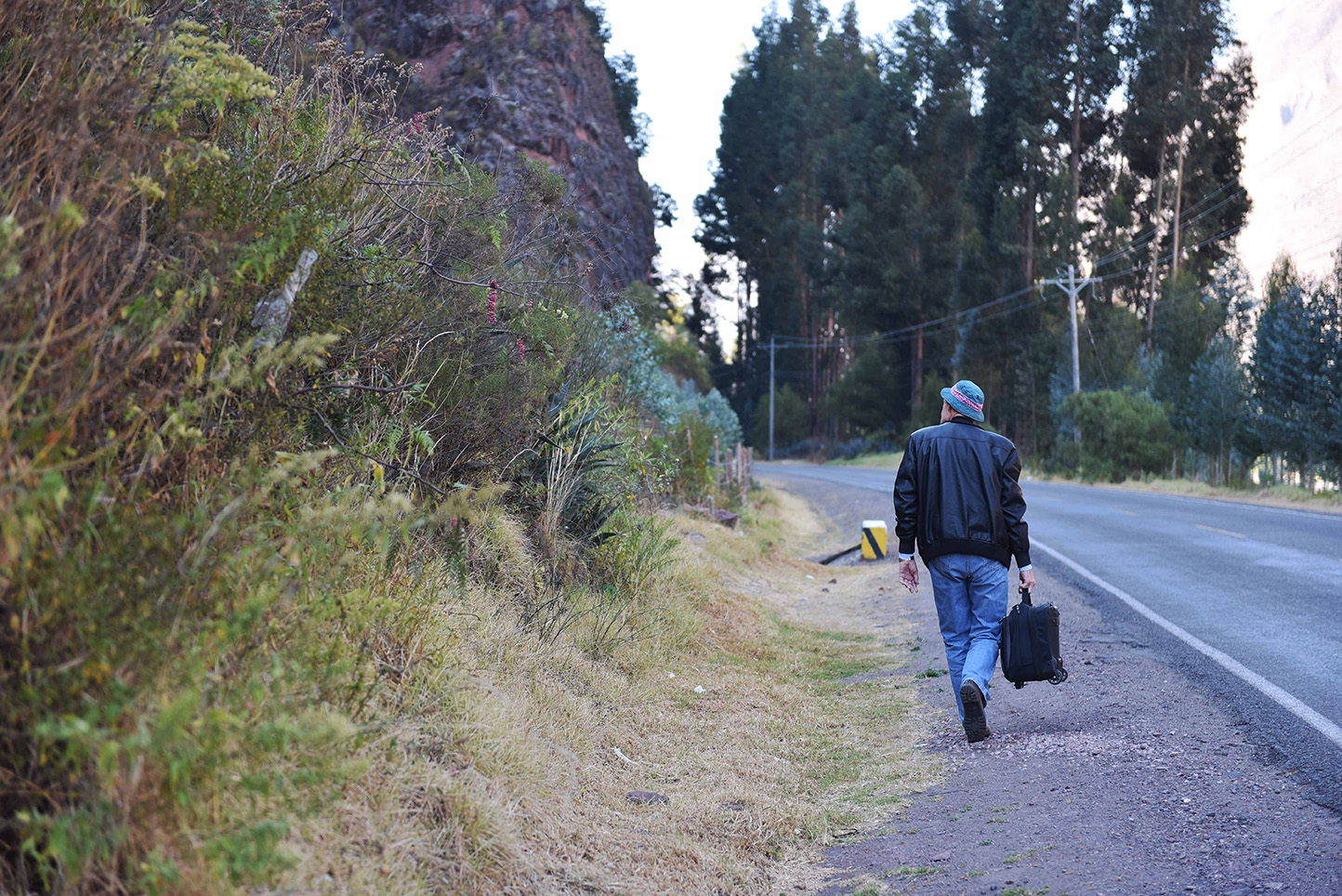
A hundred metres later and with no luck, I start to console myself: it’s been nearly three decades. Anything could have happened. The story will have to be that we didn’t find treasure at all.
Suddenly, Daniel stops.
With a jab of his finger, he points into an impenetrable tangle of quite dead-looking bushes.
As I catch up, he turns to me, eyes full of excitement, and says:
“G40725. It’s still here.”
It’s a code that means bean. A wild, untamed bean. One that contains secrets.
I peer uselessly into the undergrowth. After a few years at CIAT, I’ve seen my fair share of beans. But even with this really special one right in front of me, I can’t spot it. Daniel guides my eyes, and finally, there it is: Phaseolus augusti, an ancient, rustic cousin of the better-known Lima bean.
Far from dead, he explains that the pods have all opened, leaving their dried, twisted casings dangling from the vines. I get a flash of The Blair Witch Project and shake it away.
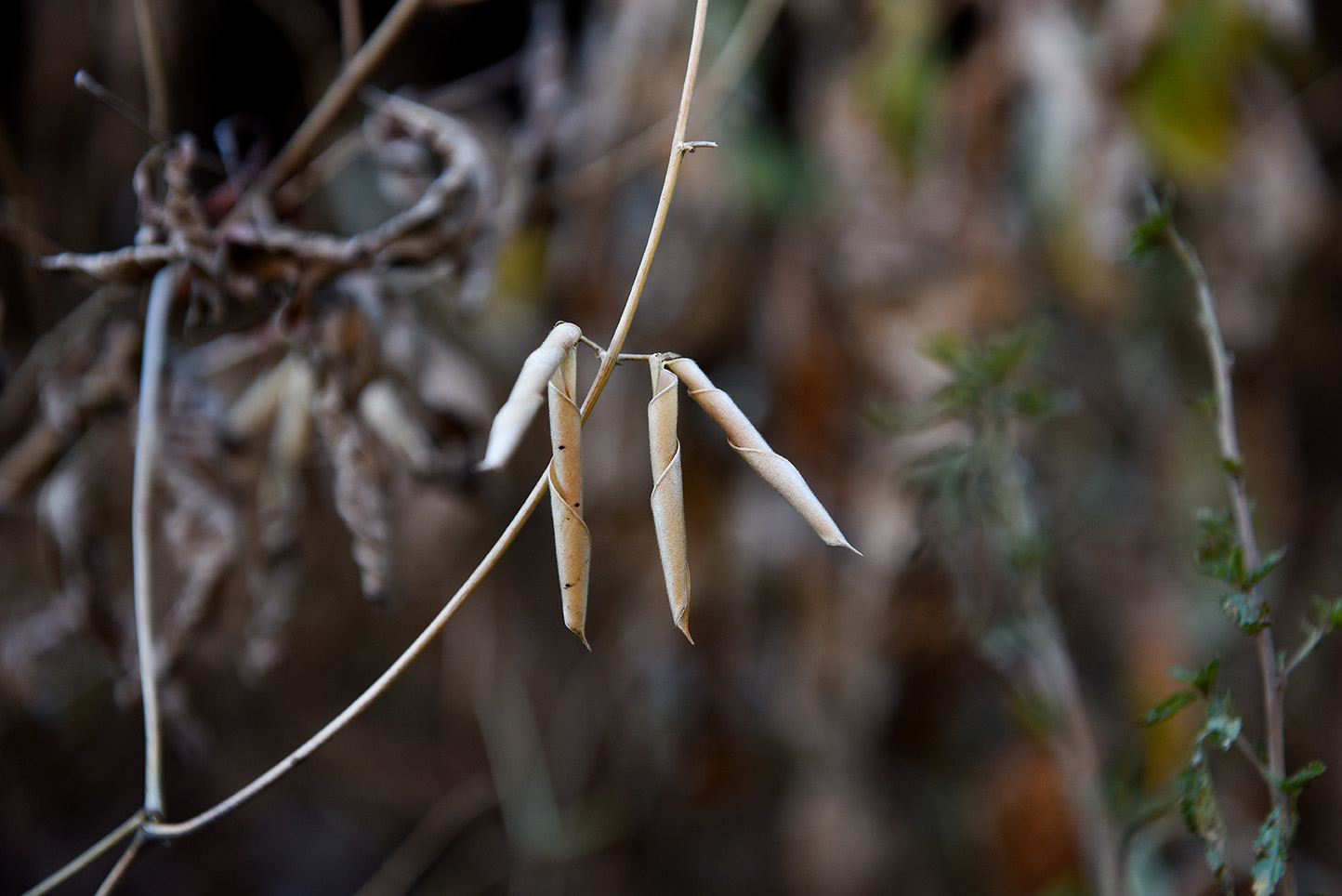
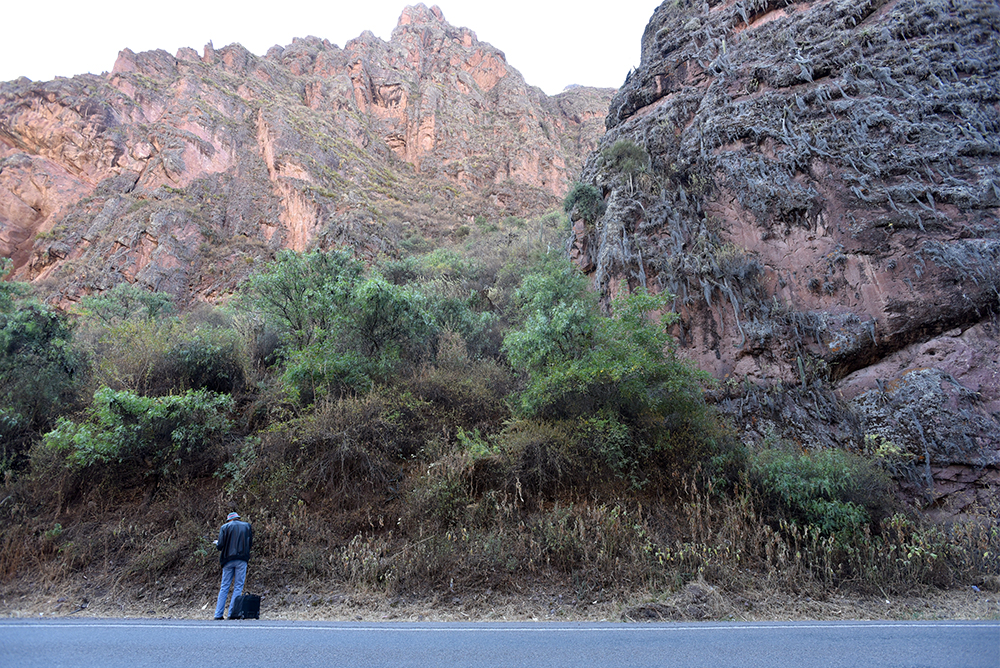
Is that it, a bedraggled bean plant? That’s the treasure?
I know; I owe you an explanation. So here goes.
Once there was a plant. We’re talking about 8 million years ago, in what is modern day Mexico. This “proto-bean” – now long extinct – is the earliest ancestor of the beans that today feed 400 million people. Yes, the kinds the British have on toast and that Mexicans themselves are known to re-fry.
By 5 million years ago, proto-bean had spawned several genetically distinct offspring. Responding to natural variations in climate, some of these new plants started to move south, at the excruciatingly slow rate of about five metres per year – the result of seed drop and regrowth, drop and regrowth. Little by little they adapted to the environments they moved through.
Over the course of a few more million years, this southerly saunter led them down through Central America, and into many parts of South America, including here, in the Peruvian Andes. Daniel can even point to the direction from which they first slinked into the Sacred Valley (north-west).
Fast-forward to around 15,000 years ago – experts disagree as to exactly when – and the first hunter-gatherers arrived in the Andes. They stumbled upon several kinds of wild beans while foraging. But the seeds were small, bitter-tasting and – here’s the deal-breaker – poisonous. It’s the reason you need to soak and cook beans even today.

But what happened next changed the course of agricultural and culinary history. The hunter-gatherers possibly saw birds feeding on the young, green pods of one bean in particular – P.vulgaris, or wild common bean. Given they didn’t promptly squawk in agony and drop out of the sky, the hunter-gatherers surmised – so the argument goes – that the immature beans were probably safe to eat. Some brave soul must have been the guinea pig.
When he or she survived, they plucked some of the beans from the wild and started cultivating them – a process known as domestication. Daniel’s research suggests that for common bean, this happened around 6-7,000 years ago in Peru’s Apurímac Region, not far from where we are in Cusco Region.*
Over time these early farmers noticed that some of the domesticated plants produced bigger seeds than others. Easier to harvest and more fun to eat, they discarded smaller-seeded plants in favour of the larger ones. Over centuries, domesticated beans tripled in size, soaking and cooking became the norm, and they became a staple food.
The once-wild common bean had been tamed.
Fast-forward to the present day and human activity has gobbled up many of the habitats of wild beans. But, whatever: they were small and poisonous anyway. Good riddance.
Fortunately, that’s not where the story ends.
Because there are still little pockets where wild beans endure. These ecological niches have managed to either repel, escape or adapt to the forces of modernity. They’re often unassuming wastelands, and the beans little more than weeds. Just sitting there, looking dead.
Great. But what about the treasure?
Well, the fact the wild beans have survived so long means they probably have some kind of evolutionary advantage. And here, on the outskirts of Lamay, one particular strength is clear: at 2,940m above sea level, this is high. And high means cold. Nowadays, farmed beans can barely survive above 2,000m.
So this particular wild bean in front of us – yes, this dead-looking thing amid a jumble of other dead-looking things – is actually right at the evolutionary frontier of cold tolerance. If you’re a crop breeder concerned with developing better beans for smallholders around the world, that’s something akin to striking gold.
And here’s why: if you cross cold-tolerant wild beans with high-yielding, large-seeded types, you could produce beans for farmers in cooler climates. Or ones that can be grown at different times of year. For a crop that’s already humanity’s most important source of vegetable protein, it’s a tantalising prospect.
It also means a bean like this really ought to be conserved in a genebank somewhere. And fortunately, it is. Wild bean G40725 was collected back in 1987 on the same verge, by the same Daniel Debouck. Things were quite different then. He tells me that at one point he was bean hunting on the valley floor while overhead, government troops exchanged fire with rebels from the Shining Path.
Undeterred, he and his Peruvian colleague took plant samples to Lima’s National University of San Marcos, and deposited the seeds at the genebank at the National Agrarian University – La Molina, also in Lima. In accordance with an agreement between CIAT and Peru’s Instituto Nacional de Innovación Agraria (INIA), duplicate seeds were conserved at CIAT’s genebank in Colombia, where Daniel continues to work. In 1988, he returned, searching for more wild beans.
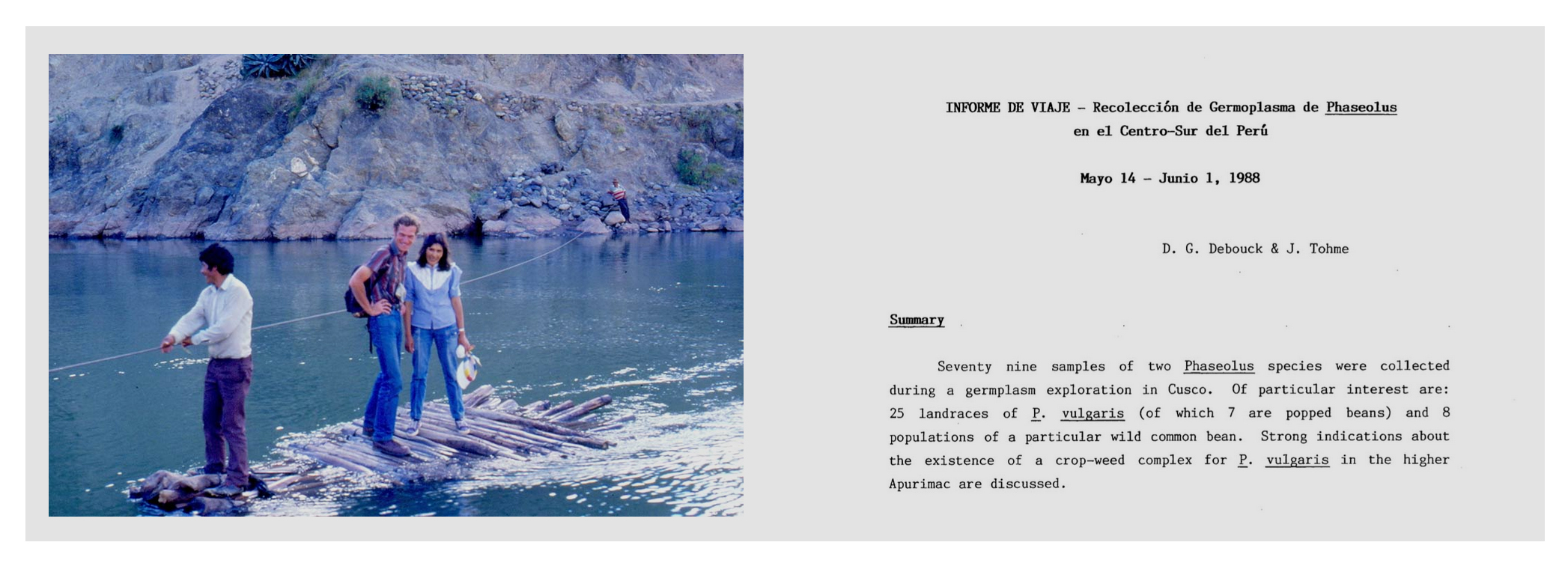
Retracing his steps today – in a much more peaceful Peru – is a quest to see how resilient or simply lucky an ecological niche can be. A lot can happen in three decades: a wildfire could wipe it out; invasive plants might choke it off; humans might build a burger bar on it. Think Joni Mitchell.
And it’s more than a hypothetical risk. Daniel has collected wild beans in parts of Mexico that are now urban areas; their evolutionary journeys and all their genetic mysteries snuffed out by asphalt and bitumen. Fortunately, those seeds are safely conserved at the CIAT genebank. Others weren’t so lucky.
So why has this particular niche in Peru survived? Daniel notes that the rocky verge is unlikely to be developed for construction or farming. The absence of vegetation-clearing goats is a boon too. He’s happy to conclude that the niche is stable.
I ask how he knows where to look for these little nooks of leguminous delight.
“That’s my trick,” he replies with a grin.
But as we begin the search for wild bean number two, it becomes clear that he has, in fact, several tricks.
Daniel can read landscapes, picking up signals from nature. The presence of certain shrubs; soil type; proximity to water, all give little whispers that he’s tuned-in to. When the whispers converge into a chorus of clues, it’s just a matter of pulling over and having a look.

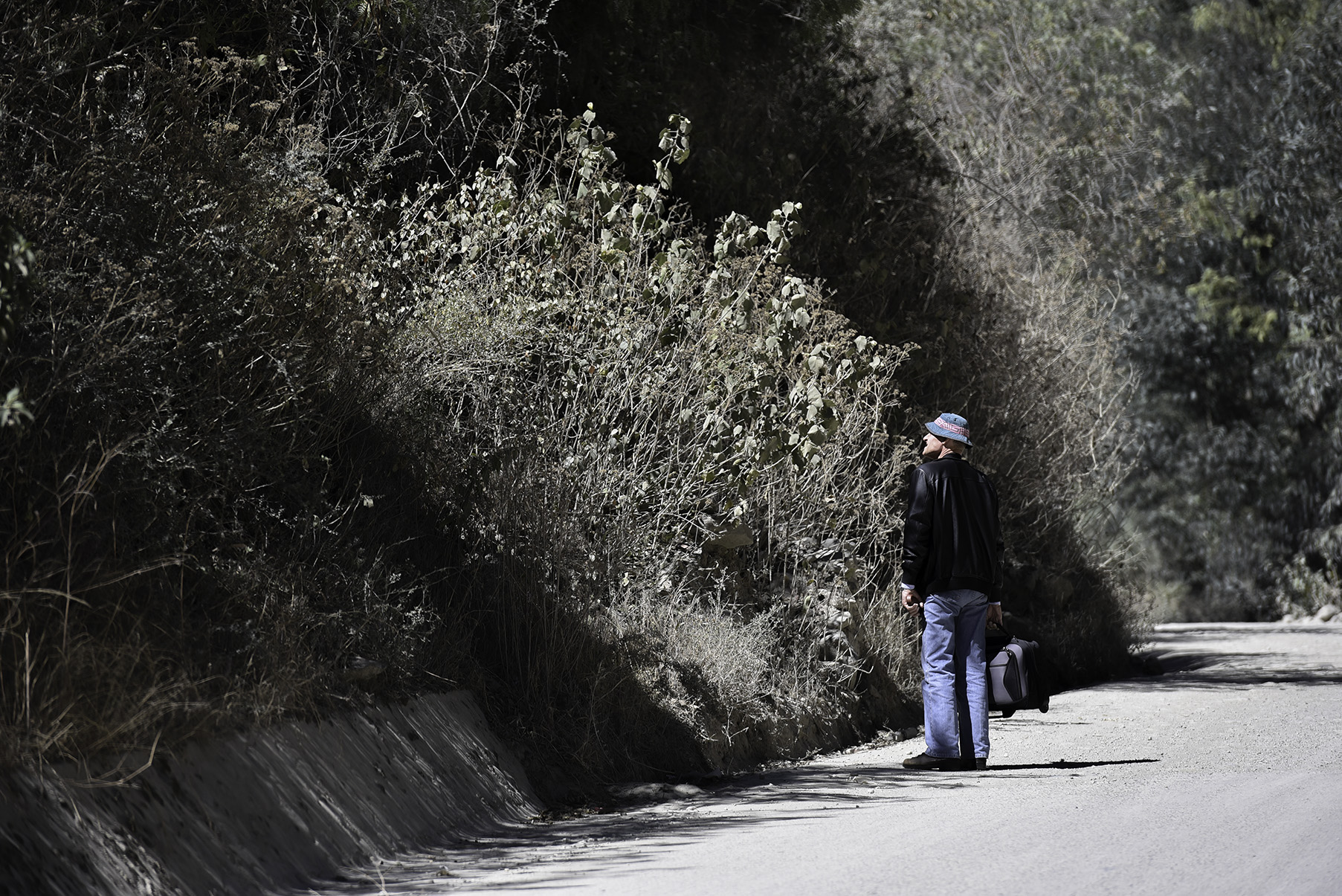
He’s honed this quasi-mystical ability during a career spent on the trail of wild beans. Rummaging through undergrowth in 14 countries in the Americas, and usually wearing his signature cyan and magenta hat, he’s discovered 15 new species, and deposited 3,270 new samples in the CIAT genebank.
These and others in the nearly 38,000-strong CIAT bean collection – the largest in the world – are freely shared with scientists around the globe under the United Nations’ International Treaty on Plant Genetic Resources for Food and Agriculture.
CIAT and its partners have already found plants that are tolerant to pests, diseases, drought and heat, and with higher levels of important minerals like iron and zinc. These have been used in crop breeding programmes to develop hardier, more nutritious beans that are now grown by millions of people in Africa and Latin America. More breakthroughs are likely too: one-fifth of the beans in the CIAT collection are yet to have their secrets unlocked. CIAT’s Future Seeds initiative hopes to move ahead with screening these.
Back on the treasure trail near Ollantaytambo, our luck continues.
We stop at a dusty roadside where the bean drumbeat drew Daniel almost 30 years ago. And after a bit of a scout around, there’s wild bean number two (G40711; another P. augusti), buried in another vegetative tangle but safe and well. Proximity to the town’s impressive Inca ruins seems to be its saviour: planning regulations prevent construction too close to the historic site.
This niche, he concludes, is also stable.
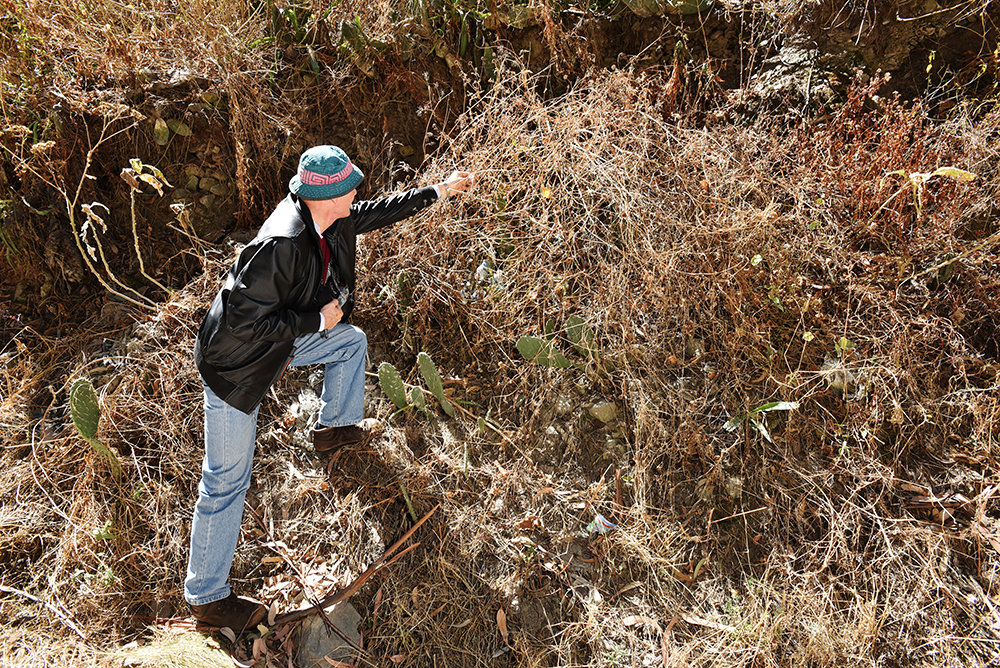

But further downhill, in the village of Puente Achaco, things aren’t looking so rosy for the final bean on our list – and the one we really want to find: wild common bean.
Work to dredge the Limatambo River had gutted the original collection site.
Daniel seems perturbed.
Once again, I scamper after him as he paces up and down a long stretch of road, rifling through hedgerows and staring into more tangles of weeds, at times almost sniffing the wind for beans.
I find myself urging his magical powers to pick up the scent.
He searches…

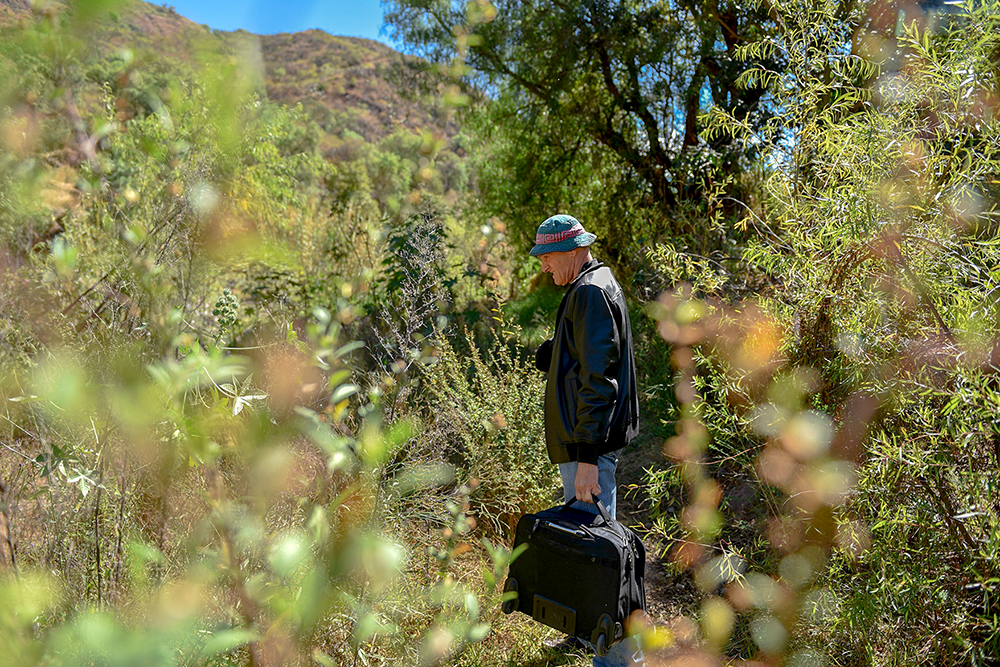
And searches…

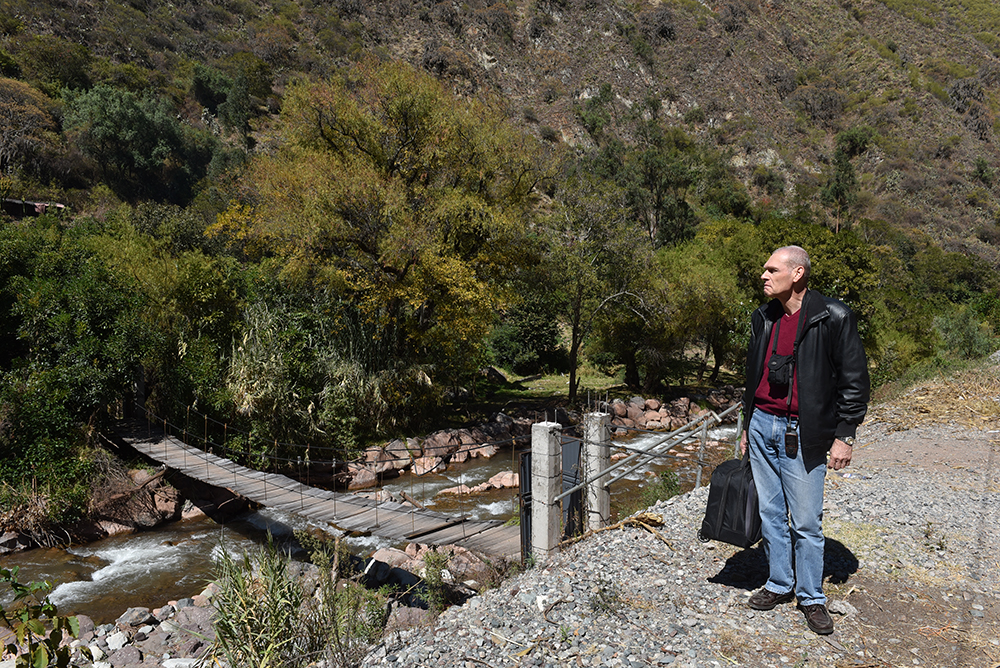
And searches some more…
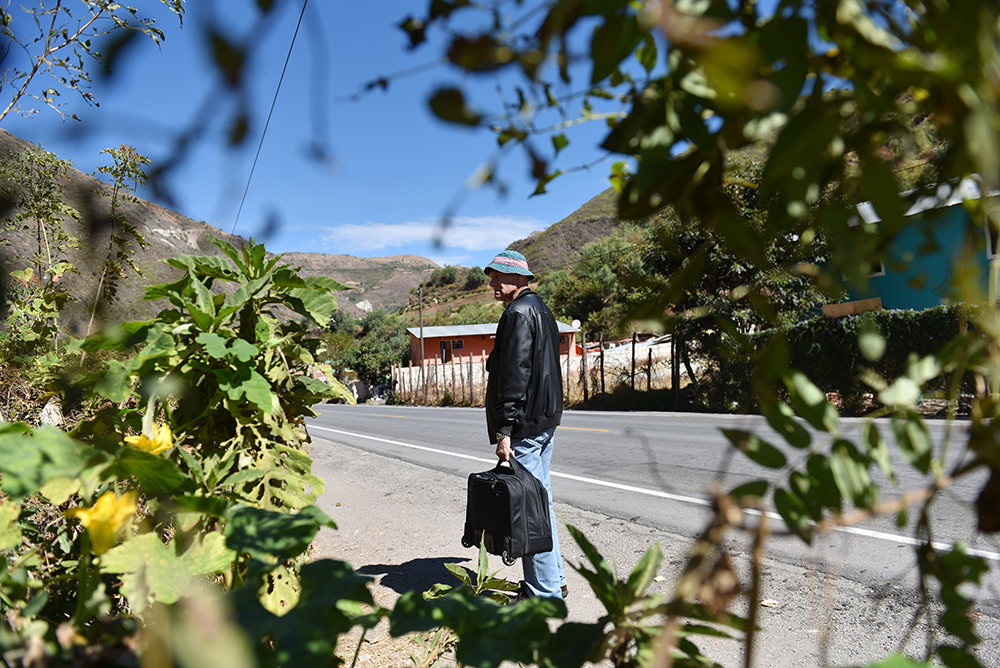
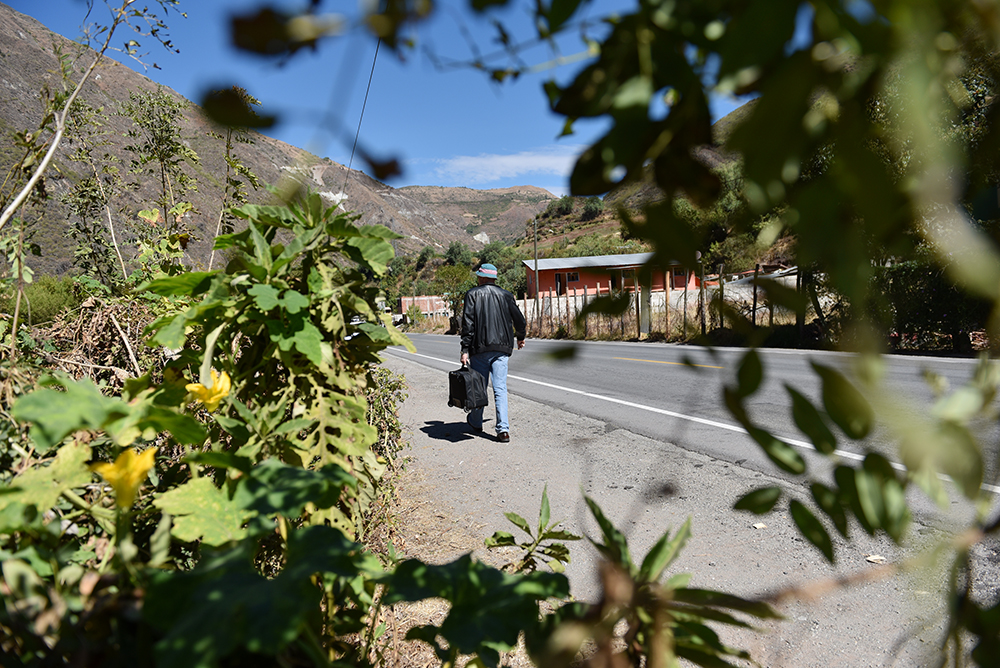
Then, a few hundred metres downstream, the sandflies start to bite: we’re close.


We cross a bridge to an area which, in disconcertingly literal testament to the aforementioned Joni, had actually been turned into a car park. And there it is: a solitary common bean plant (G23454) hugging the gravelly perimeter.
Daniel is delighted.
He uncovers more plants up a nearby trail. Some of the pods show signs of damage by feeding birds, harkening back to what those early hunter-gatherers might have seen. He pops one open to reveal the small, shiny, patterned seeds.
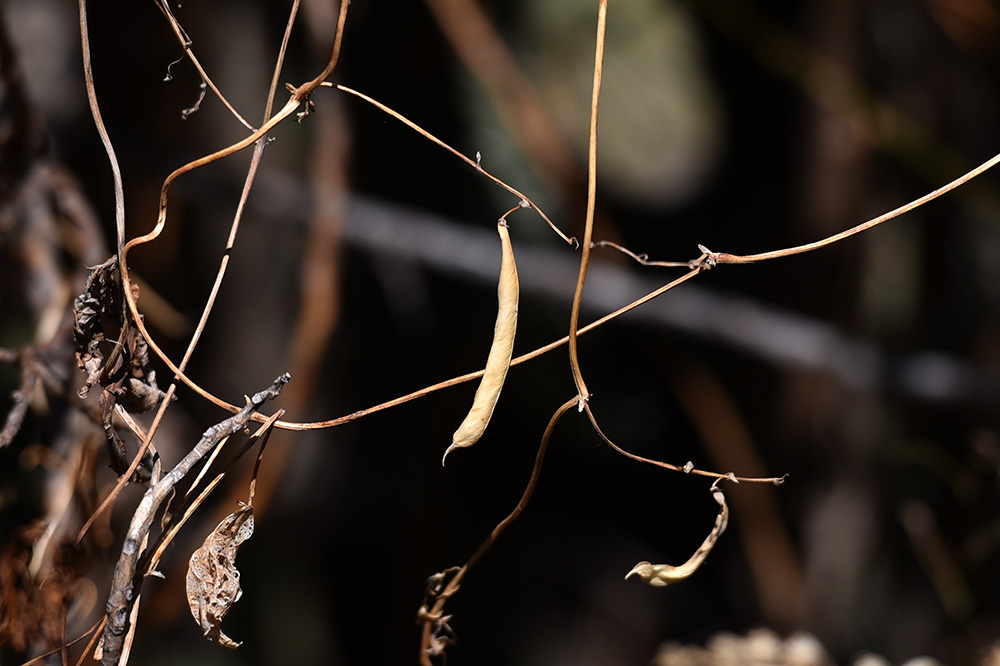
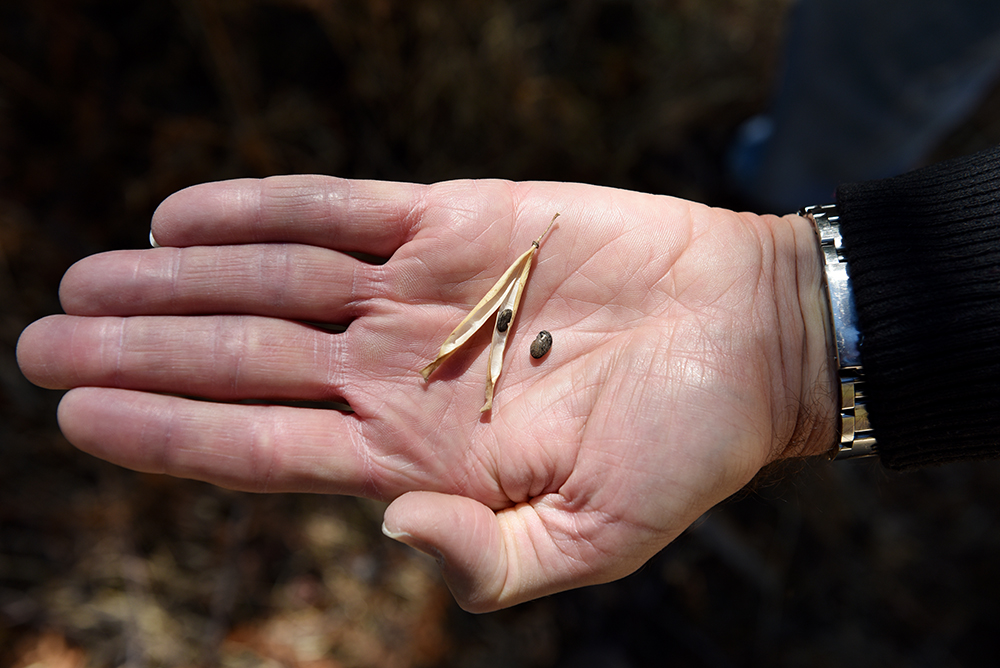
He can’t say what secrets they might contain – this is one of the beans that’s yet to be screened. But some kind of disease resistance is a possibility: surviving constant attack for a few million years is a long time to be simply lucky. At the very least, the seeds from this fragile niche are safely conserved, thanks to the efforts of Daniel and INIA 30 years ago.
As we douse ourselves in repellent, I ask how he can be so sure that these beans are actually wild and not just escapees from nearby farms. Apart from visible clues like seed size, it’s ultimately about polymorphisms, he says. These are mutations in the beans’ DNA, like a genetic autobiography. They enable geneticists to read the moves and shakes in a bean’s long journey like a book.
Briefly mesmerised by the huge volume of history contained in the tiny seed in his palm, I ask a rhetorical question:
“Can we take it with us?”
“No; it stays here,” he replies, flicking the bean back into the undergrowth.
To collect seeds you need an official permit for each trip. And for good reason: the UN’s Plant Treaty recognises that wild plants are a country’s intellectual property, and that there is a risk of biopiracy. Permits are a requirement with which Daniel has always dogmatically complied.
But having spent a couple of days with him, I also knew that he was tipping the nod to something much more profound: the idea that this wild bean should be left to continue its evolutionary journey, whichever direction it may take.
***

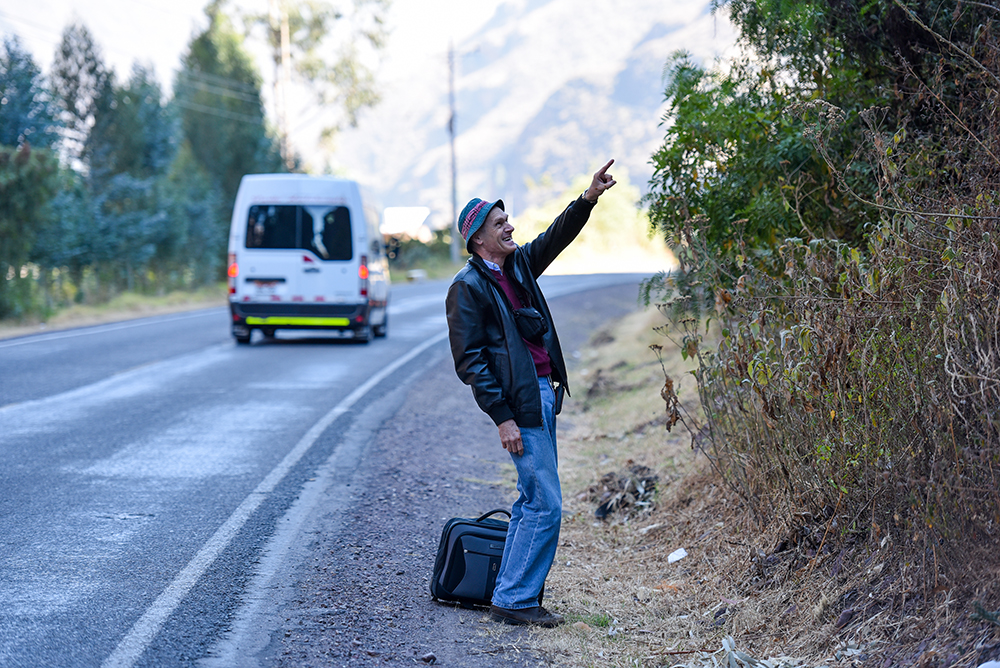
The work of Daniel Debouck and his team at CIAT’s Genetic Resources Program, which runs the organisation’s genebank, has been possible thanks to funding from: the Belgian Agency for Development Cooperation (AGCD); Germany’s Federal Ministry for Economic Development and Cooperation (BMZ); The European Union; the Crop Trust; the International Board for Plant Genetic Resources; the International Union for Conservation of Nature; Swiss Development Cooperation (SDC); the United States Agency for International Development (USAID); the United States Department of Agriculture, and the World Bank.
In addition, Daniel would like to personally thank his colleagues at INIA, for their years of support and friendship, and their important contributions to the conservation and study of wild beans in Peru. Specifically, the herbarium at the National University of San Marcos, Lima; the herbarium at the National Agrarian University – La Molina, Lima; and the Vargas Herbarium, Cusco.
* P.vulgaris is believed to have been domesticated twice; first in Peru, with a separate “domesticaton event” in Mexico a few thousand years later.
The codes G40725, G40771 and G23454 are accession numbers of the beans at the CIAT genebank. They are also identified respectively as populations #2312, #2313 and #2580.
***
Pics by Neil Palmer, except for the shot of Daniel Debouck in the 1980s, taken by CIAT’s Joe Tohme.
Many thanks to the Crop Trust for their inputs.
***
Call to Action
- Screen the rest of the beans in the CIAT genebank for characteristics that could be used by bean breeders to produce more resilient, nutritious beans.
- Invest in Future Seeds – CIAT’s new genebank. CIAT is constructing a new, state-of-the-art genebank to help improve conservation and breeding efforts relating to three vitally important crops: beans, cassava and tropical forages. The new facility will help CIAT scientists, and those around the world, to accelerate efforts to develop crops that are resilient to the effects of climate change, more nutritious, and that can form the cornerstone of sustainable agriculture. Follow the link to get involved: https://ciat.cgiar.org/future-seeds/
- Fund more expeditions for the collections of wild beans in Latin America, particularly those in threatened habitats that could face extinction. These could include the areas close to the rapidly expanding cities; where road expansion is planned; forested areas that are likely to be converted to agricultural land; and coastal areas of Pacific Central America.
*

